

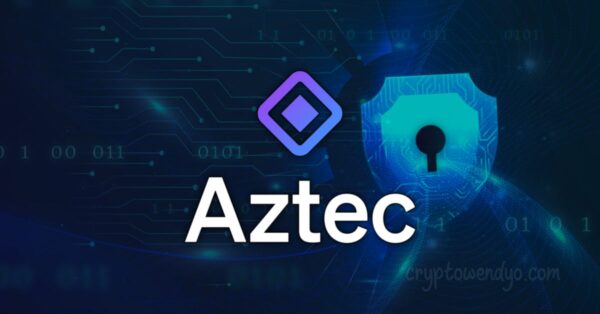
Welcome back to our continuing series on privacy-focused zkru projects. In our last article, we covered some helpful terms & acronyms to be aware of when we’re discussing Aztec, and other zkru projects.
With that out of the way, let’s dive right into Aztec, because there’s a lot to cover & a few steps to take just in case there’s an airdrop coming from them in the future.
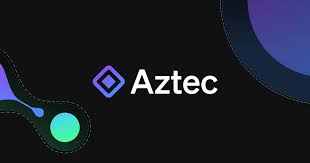
The simple fact is, with most moves in crypto your transactions are 100% viewable on the public ledger by anyone. Now, you might say, “I have nothing to hide.”, but that isn’t exactly the issue. As we move into more connected & interchangeable spaces in crypto (think domains, pfps, metaverse assets) we are also effectively swimming in more dangerous waters. How dangerous?
Well, at some point in the not-so-distant future I’m going to write an article showing you just how traceable we are, and how simple it is to follow on-chain breadcrumbs. The long & short is: this is essentially the same as being a recognizable face in your neighborhood, but it also being public knowledge every time you use the ATM & how much you withdraw. Do you want your shadiest neighbors knowing every asset you hold? I don’t.
So why not just use tornado cash? Well, if you’re a whale & need to move things from one wallet to another – that’s probably fine. It’s quite expensive, being a code-heavy mainnet contract, but you do you. Or, you could enable developers to build privacy-focused dapps on L2 alongside shielded transactions. This is Aztec’s approach.
As I explained in our last article, Aztec is essentially a walled city or centralized room, where you can be seen entering or exiting, but not what you do inside. With mixers, generally the issue is that the privacy set is low in the beginning, but without internal transfers it still leaves you with a certain number of folks that a transfer could be attributable to. Think of a privacy set like a list of suspects for a transaction. If you know they entered with a certain amount, then you can effectively discount all of the addresses that exit with considerably less. For instance, if you’re a whale entering with around 30 ETH and leaving with close to the same (or more), there are only so many addresses that it could be. Even Aztec will tell you just how small these privacy sets can be for larger accounts.

The difference in using Aztec, however, is that with shielded transactions on L2 alongside internal transfers & shielded dapps – you can’t actually consider the privacy set deductible, because it’s a lie. That is, being able to only see entrances & exits, you have no idea what losses or growth are happening to that account inside the ecosystem, or if they’re batching transactions upon exit. That invalidates any assumptions you make as to the validity of that privacy set. Yes, only 30 people entered with 30+ ETH, but those same people can leave with any amount, or any spread of bridged tokens.
You aren’t adding flawless privacy, because there is still some possibility that you might choose to enter/exit with the same amount to the same address. What you are really adding is uncertainty, because as more transactions are possible within the walled city, the chances of someone exiting with a balance different from their initial deposit is much greater – especially as you see defi dapps migrate to Aztec. This is all done for drastically cheaper than mainnet Ethereum, and Aztec Connect (now on testnet) will allow users to interact with L1 contracts & defi dapps by utilizing the Aztec L1 contract for cheap & effective privacy.

While guessing at which project will offer a governance token airdrop next is usually a crapshoot, the general consensus is that Aztec has a high probability of doing this at some point in the future. If you’re trying to maximize exposure to potential airdrops in the zk space, you’ll want to utilize zk.money to some degree as expediently as possible.
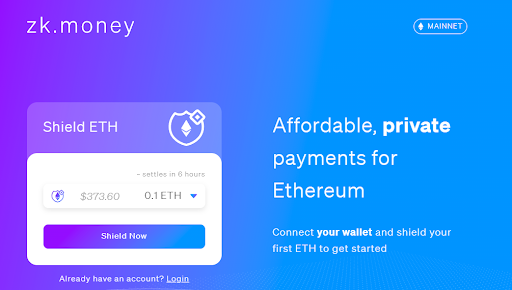
The first thing you’ll want to do is head on over to zk.money and shield some funds. As we’re just dabbling in the ecosystem & trying to interact with the contract, I’d recommend starting with .01 eth unless you plan on hanging out for a bit. After switching to .01 and clicking “shield now”, you’ll be asked to connect a web3-compatible wallet & sign a transaction, after which point you’ll be asked to create a username. Resist the urge to pick something easily identifiable, as I did below.
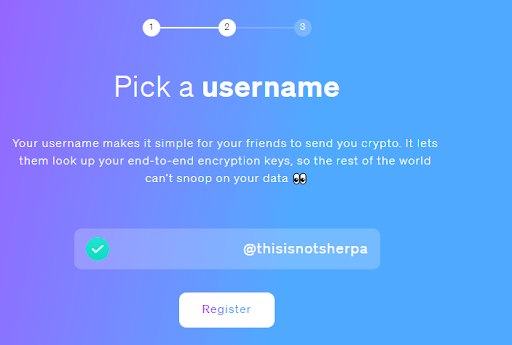
Not that it necessarily matters, but being recognizable in the dark seems pretty counter-productive.
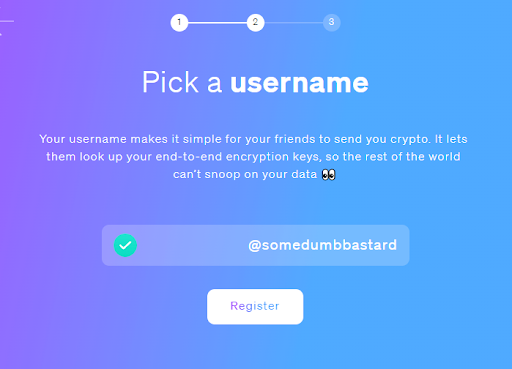
There. That’s better. Now we’ll click “register”. At this point, you’ll need to sign two transactions to associate your account with your Aztec private key & spending key. Don’t worry – nothing to write down on metal plates & store in a safety deposit box, it’s all under-the-hood. After this, you’re asked again how much you want to deposit & shield, and how much gas it will cost. Relatively speaking, it’s pretty darn cheap.
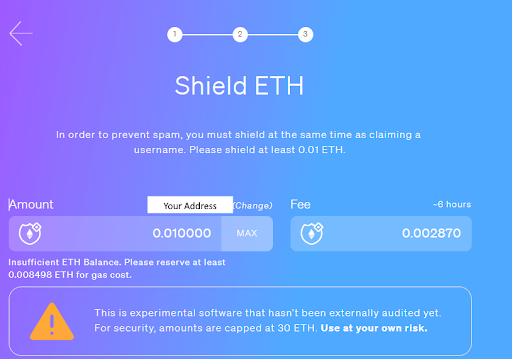
After confirming the transaction, Aztec shields the ETH and initializes your account. It will be a few hours until this tx is “published”. After this, you’re all set & you’ve successfully interacted with the ecosystem in case there’s an airdrop. Some folks might go a step further & try sending and receiving shielded assets between friends, just in case you’re rewarded for more interactions with the contract.
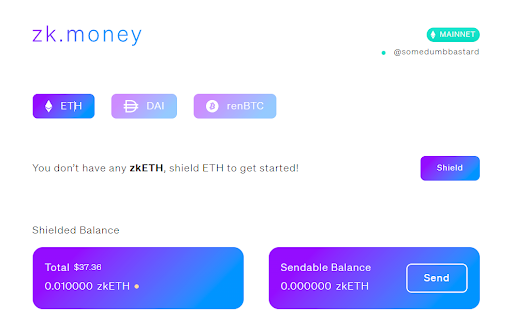
…but that is up to you. I prefer to experiment a bit when I try something new out, and sometimes that can prove to be rewarding when airdrops happen – as it turns out, testing the protocol is usually very helpful to devs. There’s so much more to explore with Aztec, like the potential for fairer governance (you don’t want anyone to know who you voted for; just that you have the right to vote), the ease of migration for contracts through Aztec Connect (no rewriting the contract; just the 50-100 lines of code to connect the bridge contract), etc.
Be sure to check out their Medium if any of this has piqued your interest. If you haven’t already, please subscribe, as I’ll be back next week with another dive into the bleeding edge of blockchain. Stay safe, and DYOR.

Torrent/seedbox aficionado, decentralist, cultural archivist, fundamental analyst, podcast addict, shitcoin-sifter extraordinaire
Tip Jar
BTC: bc1qahxrp47hpguhx8y8r382dekgca34tlv54aufht
Doge: DJRy9gGSUGeyXfVcZXzKLkBv7RmDLv3MhJ
Share This Article
Join 10,000+ forward thinkers! Get crypto education in your inbox.